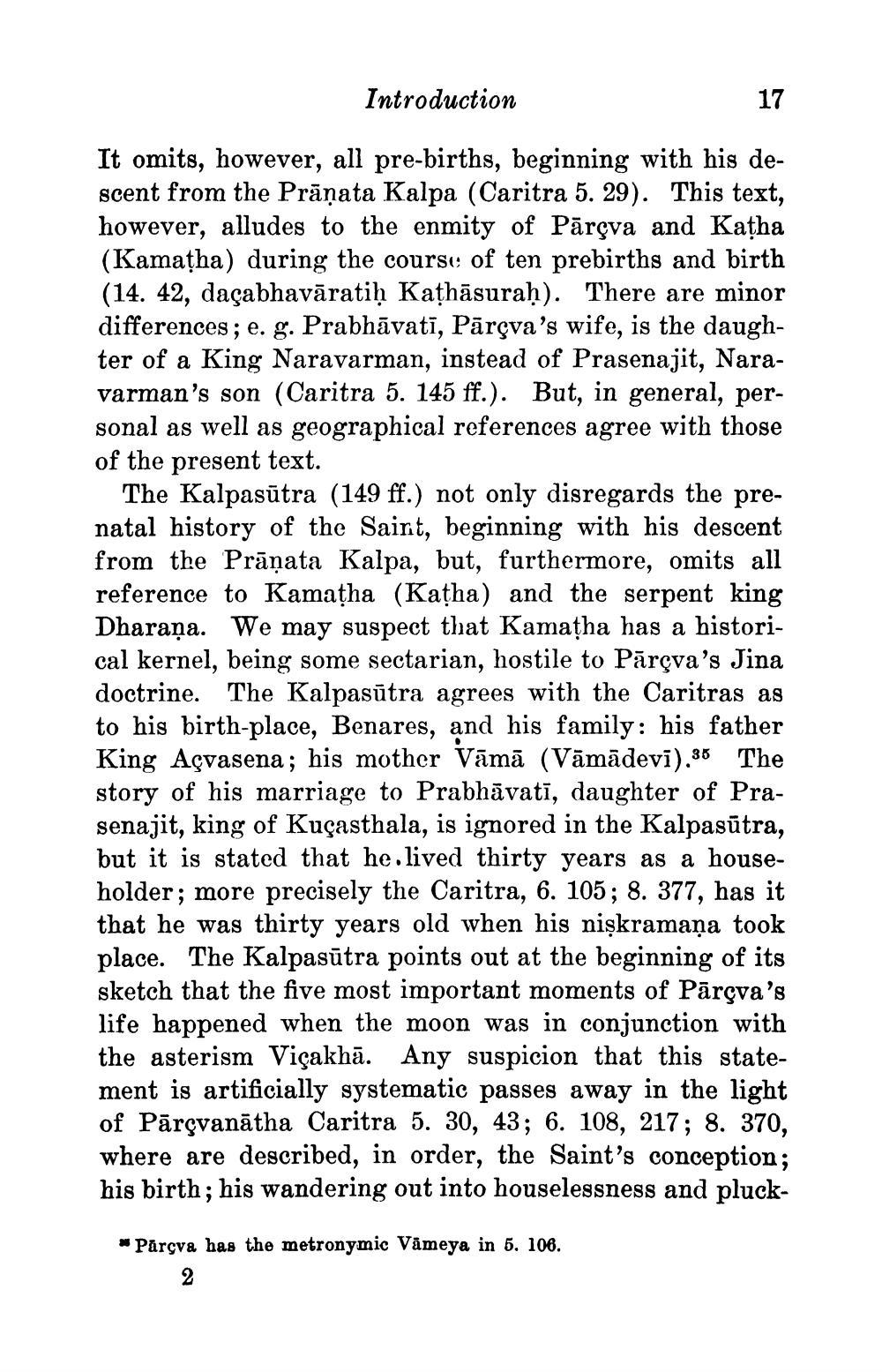________________
Introduction
17
It omits, however, all pre-births, beginning with his descent from the Prāņata Kalpa (Caritra 5. 29). This text, however, alludes to the enmity of Pārçva and Katha (Kamatha) during the course of ten prebirths and birth (14. 42, daçabhavāratiḥ Kathāsuraḥ). There are minor differences; e. g. Prabhāvatī, Pārçva's wife, is the daughter of a King Naravarman, instead of Prasenajit, Naravarman's son (Caritra 5. 145 ff.). But, in general, personal as well as geographical references agree with those of the present text.
The Kalpasūtra (149 ff.) not only disregards the prenatal history of the Saint, beginning with his descent from the Prāṇata Kalpa, but, furthermore, omits all reference to Kamatha (Katha) and the serpent king Dharaņa. We may suspect that Kamatha has a historical kernel, being some sectarian, hostile to Pārçva's Jina doctrine. The Kalpasūtra agrees with the Caritras as to his birth-place, Benares, and his family: his father King Açvasena; his mother Vāmā (Vāmādevī),36 The story of his marriage to Prabhāvatī, daughter of Prasenajit, king of Kuçasthala, is ignored in the Kalpasūtra, but it is stated that he lived thirty years as a householder; more precisely the Caritra, 6. 105; 8. 377, has it that he was thirty years old when his nişkramaņa took place. The Kalpasūtra points out at the beginning of its sketch that the five most important moments of Pārçva's life happened when the moon was in conjunction with the asterism Viçakhā. Any suspicion that this statement is artificially systematic passes away in the light of Pārçvanātha Caritra 5. 30, 43; 6. 108, 217; 8. 370, where are described, in order, the Saint's conception; his birth; his wandering out into houselessness and pluck
Parcva has the metronymic Vämeya in 5. 106.




